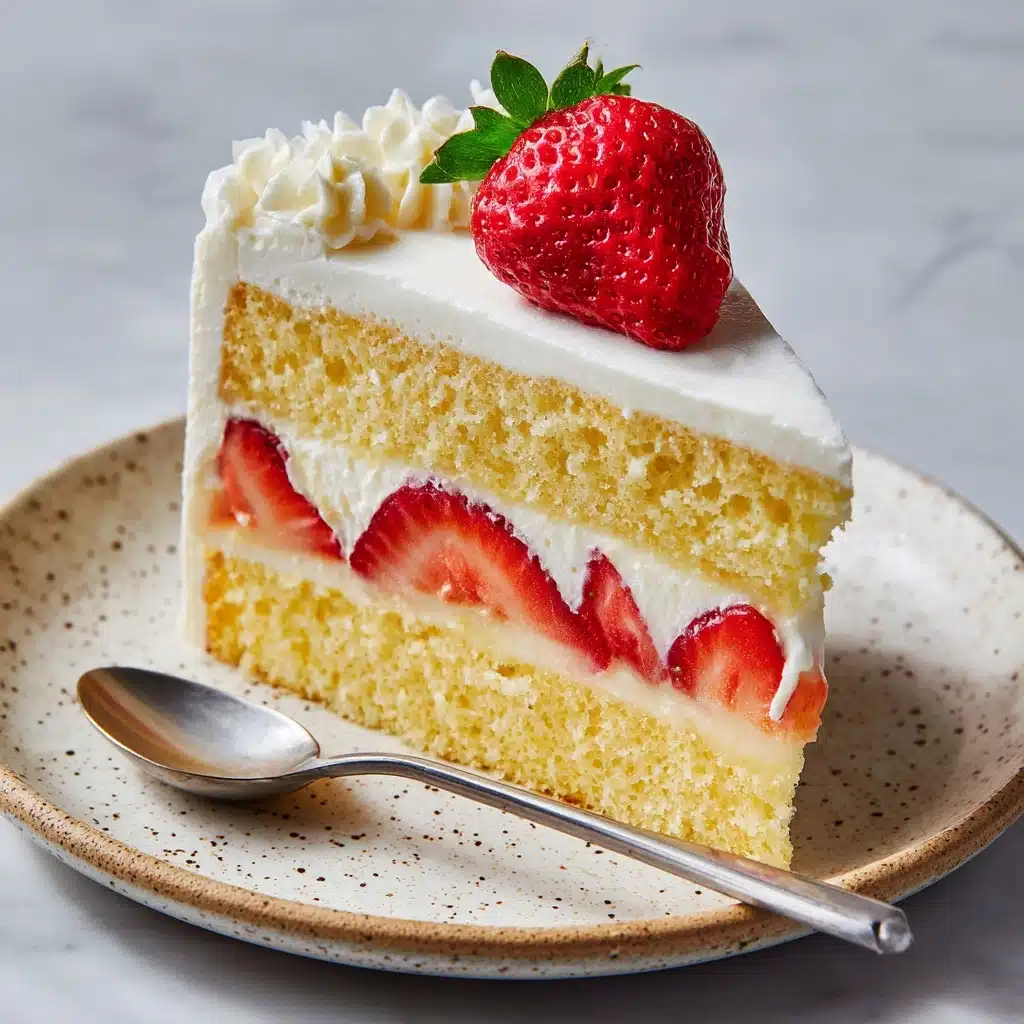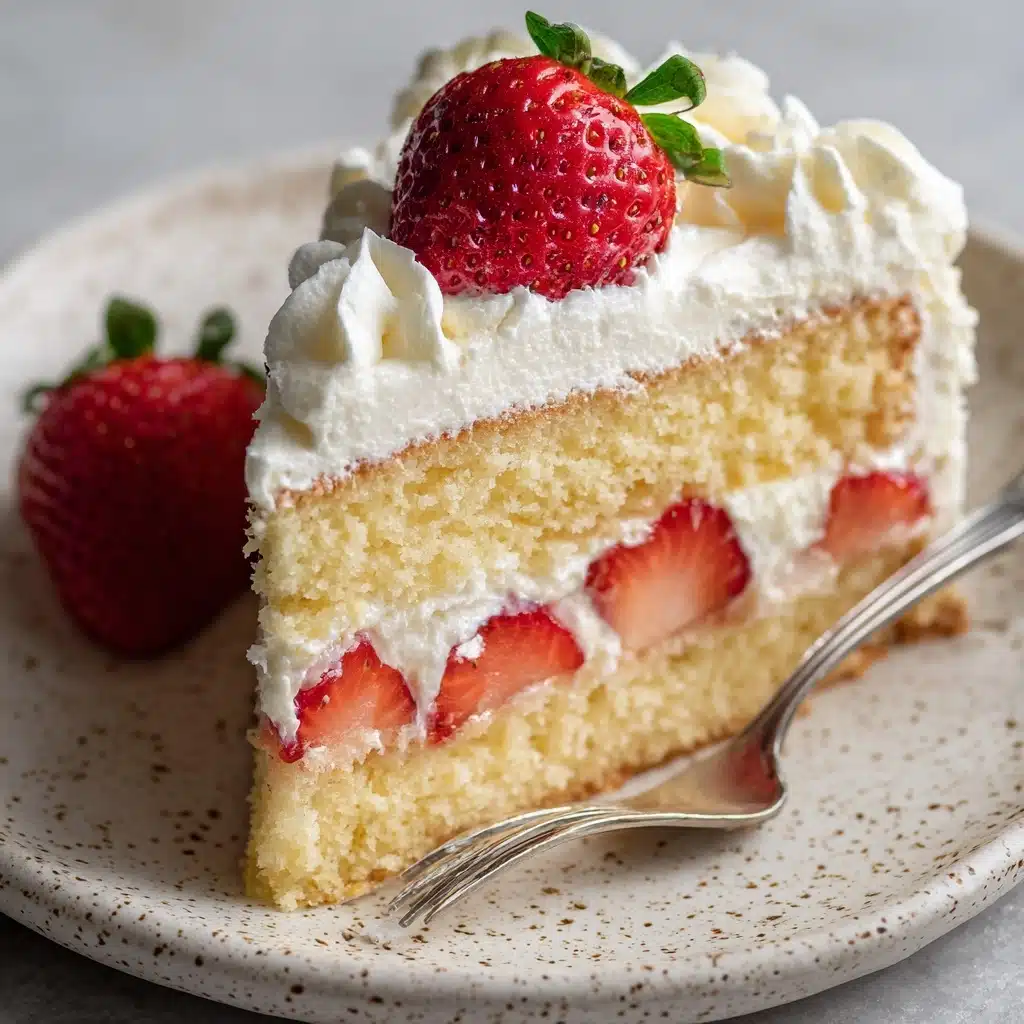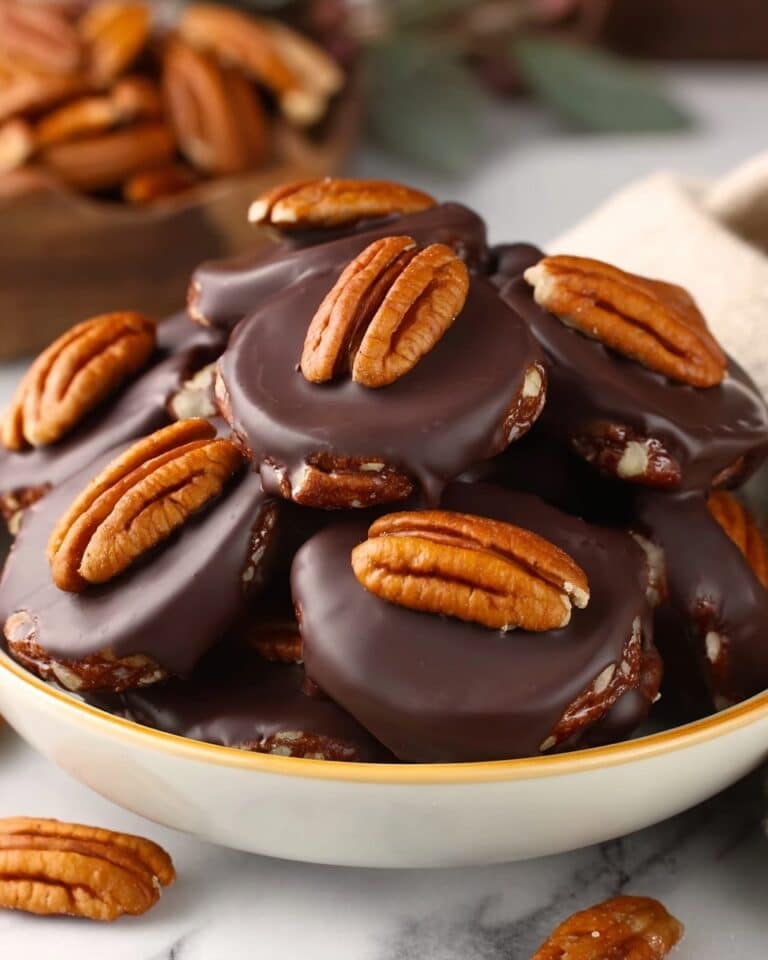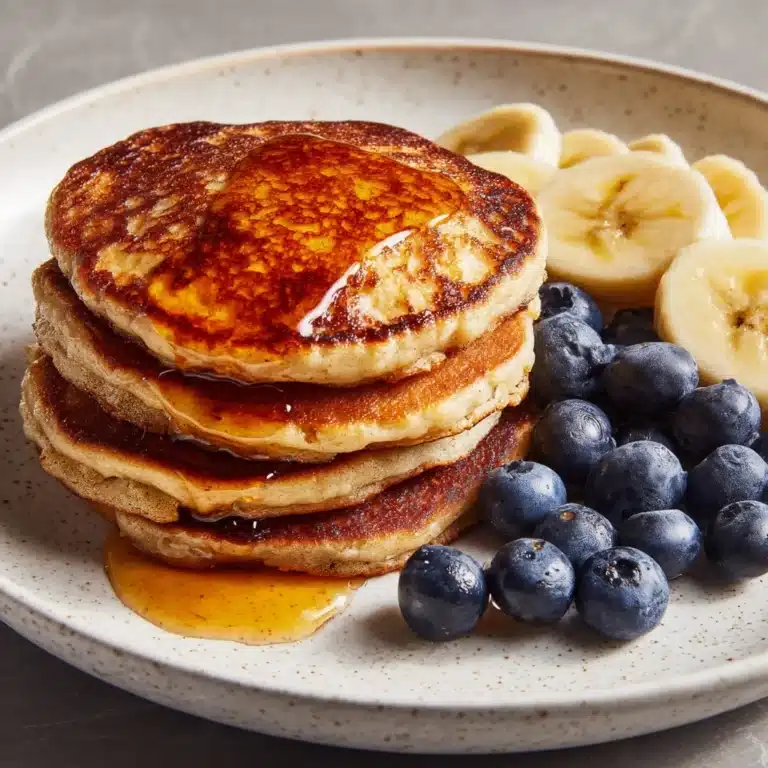Japanese Strawberry Cake Recipe
Fluffy sponge cake, billowy whipped cream, and juicy berries come together in this Japanese Strawberry Cake, the iconic showstopper that’s adored at birthday parties and every “just because” occasion in Japan. This delightful dessert combines the elegance of French sponge technique with the fresh simplicity we love in Japanese sweets. Each bite is light, airy, and full of the bright, sweet flavor of strawberries — the cake is as beautiful as it is crave-worthy! Whether you’re a newbie baker or a seasoned pro, this recipe lets you create a bakery-worthy Japanese Strawberry Cake right at home.

Ingredients You’ll Need
The beauty of Japanese Strawberry Cake lies in its short ingredient list — each item plays a starring role, from the pillowy soft sponge to the cloud-like whipped cream and the sparkling freshness of strawberries. Here’s what you’ll need and why each is so important:
- Eggs: Responsible for the sponge’s signature rise and soft, delicate texture through gentle aeration.
- Granulated Sugar: Sweetens the cake and helps create that tender crumb — don’t skimp on the mix!
- Cake Flour: Gives the cake its tender, light crumb; it’s essential for that authentic Japanese cakey softness.
- Unsalted Butter: Adds subtle richness without overpowering the delicacy of the cake.
- Milk: Keeps the crumb moist — just a splash prevents any dryness.
- Vanilla Extract: Brings a warm, inviting aroma and gentle flavor to both the cake and the whipped cream.
- Heavy Whipping Cream: Whips up into billowy clouds that wrap the sponge in lusciousness.
- Powdered Sugar: Sweetens and stabilizes the whipped cream; a must for swoon-worthy layers.
- Fresh Strawberries: The juiciest, ripest berries make all the difference for vibrant color and tart-sweet flavor in every bite.
How to Make Japanese Strawberry Cake
Step 1: Prepare the Pan and Preheat
Start by heating your oven to 350°F and lining the bottom of a 7- or 8-inch round cake pan with parchment paper. There’s no need to grease the sides — you want the batter to “climb” the edges as it bakes, yielding that signature height and airy crumb.
Step 2: Warm and Whisk the Eggs and Sugar
In a heatproof bowl, combine your eggs and granulated sugar. Set the bowl over a pot of simmering water and whisk gently until the mixture is just warm to the touch and the sugar dissolves completely. This step helps create an ultra-stable foam, resulting in that dreamy sponge texture.
Step 3: Create an Airy Batter
Take your egg and sugar mixture off the heat and beat it with an electric mixer. Watch it become pale, thick, and triple in volume — don’t rush this part! It usually takes 7 to 8 minutes, but the wait is worth it for the lightest Japanese Strawberry Cake base.
Step 4: Fold in the Flour
Next, sift your cake flour and gently fold it into the egg mixture in batches. Use a spatula and a patient hand to avoid deflating all those tiny air bubbles. Smooth, gentle strokes ensure a delicate, airy crumb instead of a dense one.
Step 5: Incorporate the Butter Mixture
In a small bowl, mix your melted butter, milk, and a dash of vanilla extract. Then, stir a little of your fluffy batter into this mixture to lighten it before folding everything back into the main batter. This trick ensures an even, luscious texture and keeps the cake moist.
Step 6: Bake the Cake
Pour your batter into the prepared pan, smoothing the top gently. Bake for 25–30 minutes until the cake is golden and springs back when lightly pressed. A toothpick should come out clean. This little golden round will become the sturdy, spongy base of your Japanese Strawberry Cake.
Step 7: Cool Completely
Flip the cake upside down onto a wire rack to cool. This helps prevent shrinking and keeps the sponge tall and tender. Wait until it’s completely cool before removing from the pan — patience pays off!
Step 8: Whip the Cream
Beat your heavy whipping cream, powdered sugar, and vanilla until soft, billowy peaks form. The cream should be light and smooth, never grainy, to perfectly complement the airy sponge. Chill it briefly if you have time — cold cream is much easier to spread.
Step 9: Slice, Fill, and Decorate
Gently slice your cooled cake into two or three even layers. Spread generous clouds of whipped cream and juicy sliced strawberries between each tier. Finish by frosting the entire cake with the rest of your cream, then arrange halved or whole strawberries on top for a finish that’s both stunning and classic to Japanese Strawberry Cake.
How to Serve Japanese Strawberry Cake

Garnishes
This cake shines brightest with a flourish of whole or halved fresh strawberries on top, perhaps dusted lightly with powdered sugar for an elegant effect. A few sprigs of fresh mint or delicate edible flowers will make it look truly celebration-ready.
Side Dishes
Pairing is pure fun! I love serving Japanese Strawberry Cake alongside cups of matcha green tea, delicate fruit teas, or even sparkling water with a hint of citrus. For extra indulgence, try a scoop of vanilla ice cream or a sprinkle of shaved dark chocolate beside your slice.
Creative Ways to Present
Transform your cake into cupcakes for handheld treats, or assemble mini individual cakes using cookie cutters for special occasions. Make it extra festive by adding a ribbon around the base or arranging the strawberries in a heart or flower pattern — Japanese Strawberry Cake is as versatile as your imagination!
Make Ahead and Storage
Storing Leftovers
Keep leftover Japanese Strawberry Cake covered and refrigerated for up to 2 days. The flavors meld beautifully overnight, and the sponge remains soft as long as it’s kept cool and wrapped (a cake box or airtight container works best). Just keep in mind the cream and strawberries are most vibrant the first day!
Freezing
While freezing fully assembled Japanese Strawberry Cake is not recommended (the whipped cream can lose its fluffy texture), you can freeze the undecorated sponge layers. Wrap them tightly in plastic and foil, then store for up to a month. Thaw at room temperature before assembling.
Reheating
Reheating isn’t common for this cake, but if your sponge layer feels a tad cold straight from the fridge, let your slice sit at room temperature for 15–20 minutes before serving. This brings back the pillowy softness without sacrificing freshness.
FAQs
Can I use all-purpose flour instead of cake flour?
Cake flour is highly recommended for Japanese Strawberry Cake because it gives the lightest, most tender crumb. If you must substitute, remove 1 tablespoon of all-purpose flour per cup and replace it with cornstarch — sift well for the best texture.
Can I prepare the cake layers in advance?
Yes! Bake the sponge a day ahead, let it cool, then wrap tightly and store at room temperature. This makes assembling your Japanese Strawberry Cake even easier the next day, and the flavors tend to deepen as it rests.
What’s the best way to slice the sponge cake evenly?
A long, serrated bread knife works wonders! Mark your layers first with toothpicks and gently saw through the cake. Chilling the cake for an hour or so makes it firmer and easier to slice cleanly.
How do I keep the whipped cream from becoming runny?
Use cold cream, chilled bowl, and beat only until soft peaks form. If you notice it starting to loosen, try placing it back in the fridge for a few minutes or whisking in a spoonful of mascarpone for added stability.
Can I add other fruits to this cake?
Absolutely! While strawberries are traditional for Japanese Strawberry Cake, you can easily swap in raspberries, blueberries, or slices of ripe peaches for a twist that’s just as delightful.
Final Thoughts
From its featherlight sponge to the bright, juicy berries and cloud-like cream, Japanese Strawberry Cake is a true celebration of simplicity and joy. Give this recipe a try — you’ll be surprised at how much homemade happiness you can stack, layer, and share with your own hands!
Print
Japanese Strawberry Cake Recipe
- Total Time: 1 hour (plus chilling time)
- Yield: 8 servings 1x
- Diet: Vegetarian
Description
Indulge in the light and airy delight of Japanese Strawberry Cake, a dreamy dessert that combines fluffy sponge cake, whipped cream, and fresh strawberries for a taste of pure bliss.
Ingredients
Sponge Cake:
- 4 large eggs
- 2/3 cup granulated sugar
- 2/3 cup cake flour (sifted)
- 2 tablespoons unsalted butter (melted)
- 1 tablespoon milk
- 1 teaspoon vanilla extract
Whipped Cream and Filling:
- 1 cup heavy whipping cream
- 2 tablespoons powdered sugar
- 1/2 teaspoon vanilla extract (for cream)
- 1 1/2 cups fresh strawberries (halved or sliced)
Instructions
- Preheat the oven: Preheat the oven to 350°F. Line the bottom of a 7- or 8-inch round cake pan with parchment paper (do not grease the sides).
- Prepare the cake batter: Whisk eggs and granulated sugar over simmering water until warm. Beat until pale and tripled in volume. Fold in flour. Combine melted butter, milk, and vanilla. Fold into the batter.
- Bake the cake: Pour batter into the pan and bake for 25–30 minutes. Cool upside down on a wire rack.
- Make the whipped cream: Beat heavy cream, powdered sugar, and vanilla until soft peaks form.
- Assemble the cake: Slice the cake into layers. Fill with whipped cream and strawberries. Cover the top and sides with cream. Garnish with strawberries.
Notes
- Use cake flour for best texture and avoid over-mixing.
- Chill the assembled cake for at least 1 hour before serving.
- Prep Time: 30 minutes
- Cook Time: 30 minutes
- Category: Dessert
- Method: Baking
- Cuisine: Japanese
Nutrition
- Serving Size: 1 slice
- Calories: 260
- Sugar: 20 g
- Sodium: 80 mg
- Fat: 14 g
- Saturated Fat: 8 g
- Unsaturated Fat: 5 g
- Trans Fat: 0 g
- Carbohydrates: 28 g
- Fiber: 1 g
- Protein: 5 g
- Cholesterol: 100 mg






